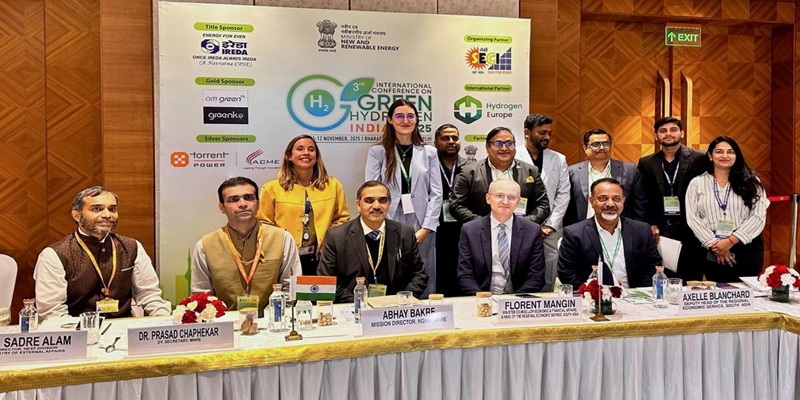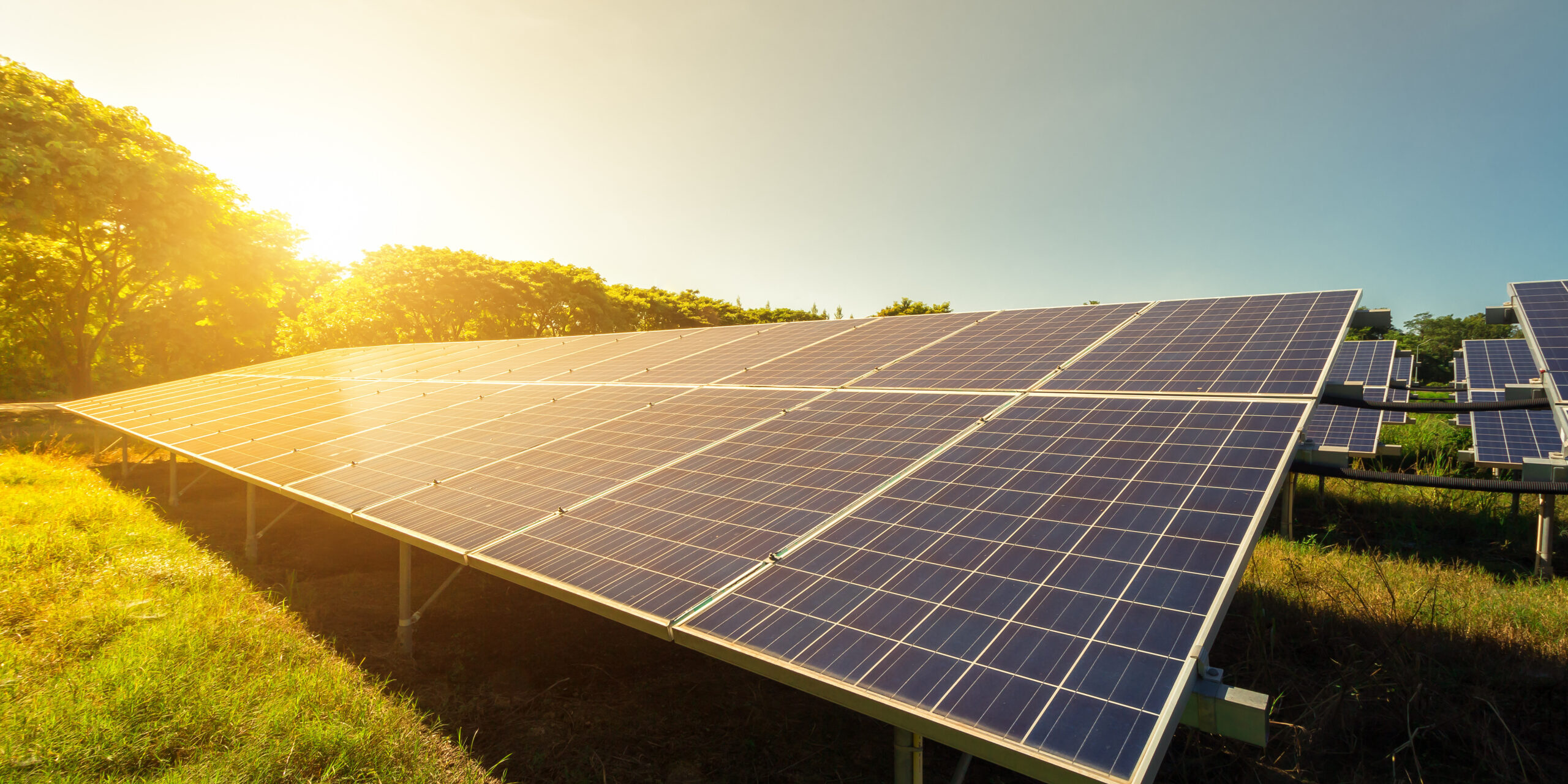Schedule a Call Back
SPDA Sessions Explore Financing & Policy Solutions to Bridge Green Hydrogen Cost Gap
 Articles
Articles- Nov 17,25

Innovative financing frameworks and policy interventions are
essential to bridge the cost gap in green hydrogen production and accelerate
India’s transition to a low-carbon economy, say industry stakeholders during
SPDA sessions.
The Sustainable Projects Developers Association (SPDA)
spearheaded two key sessions at the 3rd International Conference of Green
Hydrogen (ICGH) 2025 conference: a panel discussion on the topic “Financing
Green Hydrogen: Bridging the Cost Gap” and a roundtable on the topic
“India-France Roundtable with Industry CEOs on Green Hydrogen Value Chain”.
Both sessions aimed to deliberate and chart a roadmap for the future of the
green hydrogen and its derivatives industry in India.
The high-level sessions brought together eminent scientists,
industry leaders, global financiers, and lenders to discuss pathways for
accelerating investment in green hydrogen. During the ‘Financing Green
Hydrogen: Bridging the Cost Gap’ panel discussion, the dialogue focused on
understanding cost drivers, identifying advanced financing tools, sharing
global best practices, strengthening risk mitigation frameworks, and building
robust offtake mechanisms.
The panel discussion was moderated by Dr Ashvini Kumar,
Former Managing Director, SECI and the keynote address was given by Joshit
Ranjan Sikidar, Director Finance, SECI. The key speakers at the discussion
include - Ashok Sharma, Deputy Managing Director, SBI; Sudeep Sural, Senior
Executive Vice President – Head of Thematic Research, HDFC Bank; Dr Susana
Moreira, Executive Director, H2Global Foundation; Anuj Banga, Head - Structured
and Project Finance, India, SMBC; Mudit Parashar, CFO, ACME and Ranjit Gupta,
CEO, Ocior Group among others.
The deliberations at India-France roundtable focused on
specific roadmap on green hydrogen, endorsed in October 2022 and aimed to
strengthen collaboration on regulatory frameworks, carbon certification,
scientific research, and industrial partnerships.
The roundtable featured eminent speakers such as Mahaveer
Singhvi, Joint Secretary - New Emerging and Strategic Technologies (NEST)
Division, Ministry of External Affairs; Florent Mangin, Minister Counsellor for
Economic & Financial Affairs, and Head of the Regional Economic Service,
South Asia; Axelle Blanchard, Deputy Head of the Regional Economic Service,
South Asia; Elisa Vigato, Energy and Environment Attaché, Regional Economic
Service, South Asia; Thierry Advocat, Counsellor, representative of the CEA; Dr
Meenakshi Singh, Scientific Coordinator, IFI; Guirec Servan, Chief Executive
Officer India, EDF Power Solutions; Rajeev Tiwary, Head of BD &
Partnerships - New Business, EDF Power Solutions; Amit Jain, Chief Executive
Officer India, ENGIE; Anand Srivastava, Business & Project Developer, HDF
Energy; and Laura Gilotte, Economic Attaché, South Asia, among others.
“India has emerged as one of the fastest growing ecosystems
for green hydrogen in the past three years since the launch of Green Hydrogen
Mission. Technology, skilling and standards will help strengthen the ecosystem
for green hydrogen. The kind of projects coming up offer immense potential for
replacing fossil fuel import into the country and also facilitate
decarbonisation of many sectors,” said Abhay
Bakre, Mission Director, Ministry of
New and Renewable Energy.
Dr Sadre Alam, Director, New
Emerging and Strategic Technologies?(NEST) Division, Ministry of External
Affairs, said, “We should aim that our Green Hydrogen and its derivatives’
production target should be more and more export oriented. Besides, we are
confident of increasing our domestic consumption for Green Hydrogen and its
derivatives as industries are becoming more competitive in setting up more
plants in record time.”
“The future of energy must be clean, secure and equitable
and India’s renewable energy journey over the past decade has been
transformative. Achieving the vision of Atmanirbhar Bharat and Viksit Bharat
will be “challenging” if we do not bring in a change in the fuel mix in Indian
economy,” opined Vineet Mittal, Chairman,
Avaada Group, at ICGH. “We have the technology in place and government has
proved green fuel could be competitive, now we have to collectively build a
model where hard-to-abate sectors and industries can start using it more
aggressively and government should support this with mandates like it did in
case of wind and solar. Energy transition is not just about technology it is
about transforming destinies of nation it is one of the strong pillars of
Viksit Bharat,” he added.
While green hydrogen is rapidly gaining prominence as a key
pathway for deep decarbonisation in hard-to-abate sectors such as steel,
cement, heavy mobility, and chemicals and fertiliser, its commercial uptake
remains constrained by a significant cost gap compared to grey hydrogen.
Ravi Verma, Member,
Governing Council, Sustainable Projects Developers Association (SPDA),
discussed with his French counterparts, about, how India is aggressively
working towards developing the ecosystem for Green Hydrogen and its derivatives
such as Green Ammonia and Green Methanol within the country, and invited the
French companies to work closely with India.
He also assured his French counterparts by saying that
“Indian Government has, from time to time, been addressing the various issues
confronting the green hydrogen industry and a lot of policy intervention has
been done to promote the sector so as to make it more and more competitive,
both for renewable energy as well as for export purposes. There will be a lot
of focus on the cost reduction, efficiency, technology localisation.”
Though India has taken significant strides through the
National Green Hydrogen Mission, the high cost of electrolyzers, renewable
power, and infrastructure remains a major impediment to commercial viability. Additionally,
limited offtake assurance, and underdeveloped transport and storage
infrastructure continue to hinder large-scale deployment.
Related Stories

SPDA Sessions Explore Financing & Policy Solutions to Bridge Green Hydrogen Cost Gap
Though India has taken significant strides through the National Green Hydrogen Mission, the high cost of electrolyzers, renewable power, and infrastructure remains a major impediment to commercial v..
Read more
India’s Solar Waste May Reach 11 Million Tonnes by 2047
The country’s installed solar capacity has already crossed 85 GW, and with the target of 500 GW of renewable energy by 2030, waste volumes are expected to rise sharply in the coming decades.
Read more
India’s Solar Module Capacity to Cross 125 GW, Raising Surplus Fears
Industry faces overcapacity risks as production triples domestic demand
Read more














